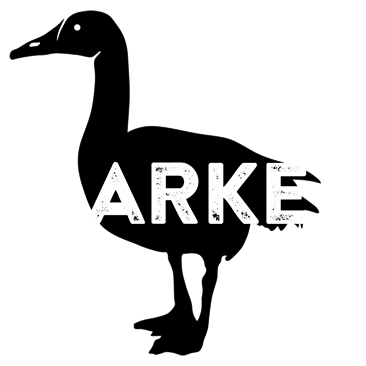Limited-release “Ham Pastor” with pineapple cider, adobo, guajillo, orange, cinnamon, allspice
and
City Ham
Your ham is fully cooked. If you'd like to serve it warm, here’s how we recommend warming it up…
1. Preheat oven to 325 F.
2. Unwrap ham and place in shallow roasting pan on roasting rack. Pour any juices from the ham package over the ham. (The Rosemary, Tangerine, Mustard Glaze is already on the Peach Wood Smoked Ham—there is no second package. Pour any glaze or juices left in the ham packaging over the ham.)
3. Cover bottom of pan with a little water. (Optional: instead of water, use stock, cider, wine, or orange juice.)
4. Cover ham and roasting pan with a loose "tent" of aluminum foil, and seal edges of aluminum foil tightly around rim of roasting pan. Bake for approximately 12-15 minutes per pound.
5. With about 30 minutes left in heating time, remove ham from oven and baste with juices from pan. Return ham to oven uncovered and continue heating. Basting can be repeated several times during those last 30 minutes.
6. Final internal temperature of ham should reach 140 F. Remember, ham is already fully cooked, but heating to this temperature helps ensure it’s warm throughout.
7. Remove ham from oven and allow it to rest for 15 minutes before slicing.
Ribeye Roast: bone-in or boneless (aka prime rib, standing rib roast, etc.)
Pull your roast from the fridge and let rest uncovered at room temp for about an hour. Cover your roast with olive oil, coarse ground pepper, and kosher salt, and place on the rack of a roasting pan.
Preheat oven to 450F.
Cook your prime rib at two temperatures: first at the high heat of 450F, which will help get a nice sear on the outside of your meat and lock in its juices, and then at 350F to finish cooking. After about 30 minutes at 450F, reduce the oven temp to 350F and continue cooking until your meat thermometer reads:
Medium-rare — about 110F
Medium — about 120F
Medium-well — about 130F
Well — about 140F
Remove your roast from the oven and wrap with tin foil to let rest for 15 minutes before carving and serving.
Roasting Raw Whole Turkey
Watch Chris' brining & roasting video and get his turkey brining recipe.
Let your turkey come to room temperature (about 1 hour) and warm your oven to 375°F. Roast the bird for about 20 minutes then lower oven temperature to 325°F. Bake until skin is a light golden color then cover loosely with foil. During last 45 minutes of baking, remove the foil to finish browning skin. Basting isn't required but promotes even browning. When the turkey is done, remove it from the oven and allow to it stand loosely covered with tin foil for 20-30 minutes before carving. This allows the juices to redistribute throughout the meat and makes for easier carving. The only true test for doneness is the temperature of the meat (not the color of the skin or juices). The turkey is done when the meat reaches an internal temperature of 165°F. To get an accurate reading, be sure that your thermometer is not touching the bone.
Whole Smoked Turkey or Smoked Turkey Breast
Your smoked turkey is fully cooked. If you'd like to serve it warm, here’s how we recommend heating it up.
1. Store your smoked turkey in the fridge. Remove it and let sit uncovered at room temperature for about 1 hour.
2. Heat oven to 300-325°F. Rest the turkey/breast in the rack of a roasting pan. (Optional: drizzle stock, cider, or beer over the turkey/breast.)
3. Cover turkey/breast and roasting pan with a loose "tent" of aluminum foil, and seal edges of aluminum foil tightly around rim of roasting pan. Heat the turkey/breast to an internal temperature of about 160-165°F. On average, it will take about 17 minutes per pound to warm your smoked turkey/breast to this internal temperature. Remember that your smoked turkey/breast is fully cooked--warming it to this internal temperature will help ensure that it's hot throughout.
4. Remove the turkey/breast from the oven and carefully remove the tin foil. Baste the skin with butter and/or stock and drippings from the pan.
5. Increase the oven temperature to 425°F and pop the uncovered turkey/breast back in the oven until it begins to show your desired shade of browning.
Raw Turkey Breasts:
https://www.gordonramsay.com/gr/recipes/turkey-breast-and-gravy/
https://www.foodandwine.com/recipes/turkey-breast-with-mustard-sage-crumbs
https://healthyfitnessmeals.com/roasted-turkey-breast/
https://www.foodnetwork.com/recipes/ellie-krieger/herb-roasted-turkey-breast-recipe-1947374
Marrow Bone Appetizer Kit
Preheat oven to 450F, rest marrow bones cut-side-up in an oven safe pan and sprinkle with salt and pepper. Roast about 20 minutes (marrow should be soft and bones will show some browning), remove from oven, and serve immediately. We like lightly toasting the semolina loaf before scooping the hot marrow onto the bread slices.
Escargot
Arrange escargot in broiler safe pan so the opening faces up (to prevent the delicious sauce inside from spilling out). Broil until butter is bubbly, about 5 minutes.
Rush Creek Reserve
Before serving Rush Creek, bring the cheese to room temp or warm it gently in an oven.
If using an oven, remove the paper wrapping and either wrap the cheese in tin foil or cover it in an oven-safe ceramic crock. Place the cheese in a 250F oven for approximately 30-45 minutes, or until the entire cheese becomes soft and warm.
Use a knife to cut around the perimeter of the cheese's bloomy rind, just above the bark. Lift off the rind and scoop out the soft interior with a spoon to serve. The rich, savory flavors are deep but delicate, and pair nicely with cured meats, roasted root vegetables, bread, crackers, and more.

